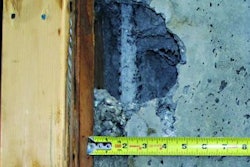Construction employment increased in 138 out of 337 metropolitan areas between March 2010 and March 2011, decreased in 153 and stayed level in 46, according to a new analysis of federal employment data released today by the Associated General Contractors of America. But association officials said that the industry's five-year employment slump is far from over, and could worsen as public construction winds down.
"Even with more metro areas adding jobs than in any 12-month period since November 2007, the fact is most areas are far below previous construction employment peaks," said Ken Simonson, the association's chief economist. "With federal stimulus, base realignment and Gulf Coast hurricane-protection projects slated to end soon, many areas are at serious risk of another downturn in construction employment."
Dallas-Plano-Irving, Texas again added more construction jobs (9,800 jobs, 10%) than any other metro area during the past year while Bay City, Michigan, added the highest%age (25%, 200 jobs). Other areas adding a large number of jobs included Chicago-Joliet-Naperville, Illinois (3,900 jobs, 4%); Warren-Troy-Farmington Hills, Mich. (2,800 jobs, 10%); and Northern Virginia (2,600 jobs, 4%). Large%age gains also occurred in Flagstaff, Arizona (24%, 400 jobs); Elkhart-Goshen, Indiana (20%, 500 jobs); and Houma-Bayou Cane-Thibodaux, Louisiana (18%, 900 jobs).
The largest job losses were in Atlanta-Sandy Spring-Marietta, Georgia (-6,800 jobs, -7%) and New York City (-6,800 jobs, -6%), closely followed by Los Angeles-Long Beach-Glendale, California (-6,600 jobs, -6%). Lewiston, Idaho (-38%, -500 jobs) lost the highest%age. Other areas experiencing large%age declines in construction employment included Steubenville-Weirton, Ohio-West Virginia (-26%, -500 jobs); Bend, Oregon (-16%, -500 jobs); and Lafayette, La. (-15%, -1,000 jobs).
Association officials said that private nonresidential and multifamily construction appear to be stabilizing or picking up in most markets, but that the gains are likely to be offset by pending drops in public construction. Noting that prices for many key construction materials continue to rise, association officials cautioned that delaying investments in public construction could likely force taxpayers to pay more for the same work in the future.
"There is nothing fiscally responsible about buying high instead of buying low when it comes to infrastructure investments," said Stephen Sandherr, the association's chief executive officer. "If public officials would cut red tape and costly regulations like they are cutting construction budgets, that would help boost private sector demand."
View construction employment figures by metro area and rank.



















